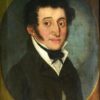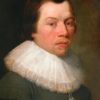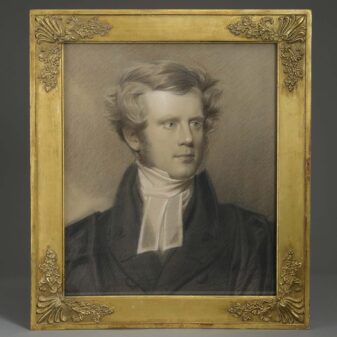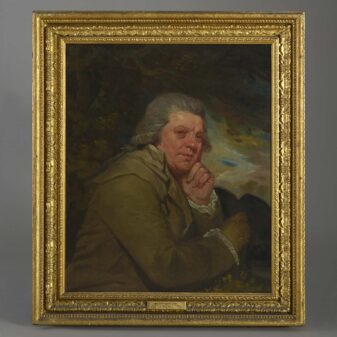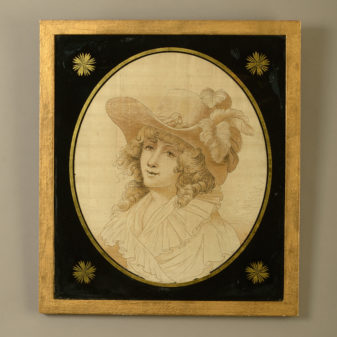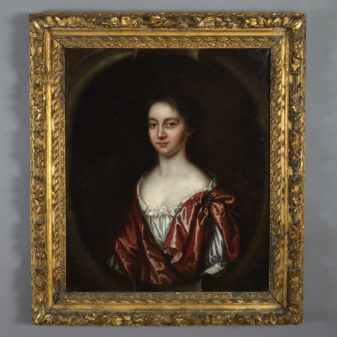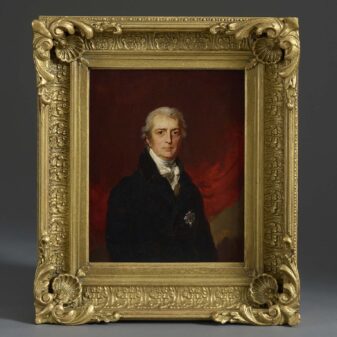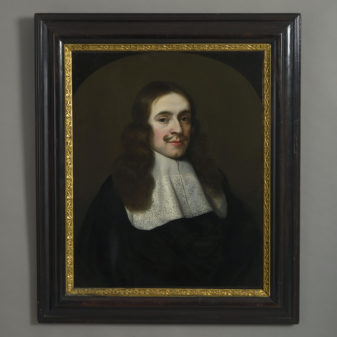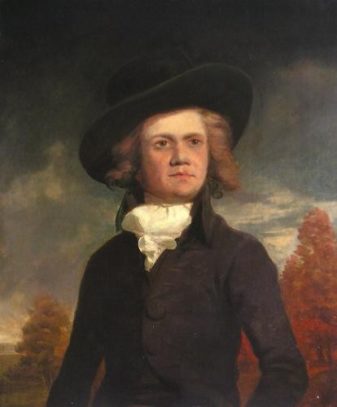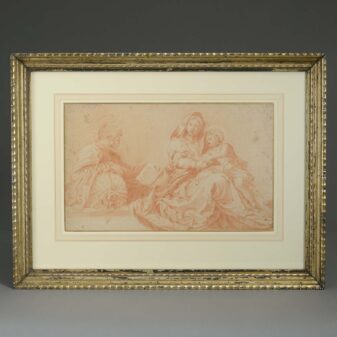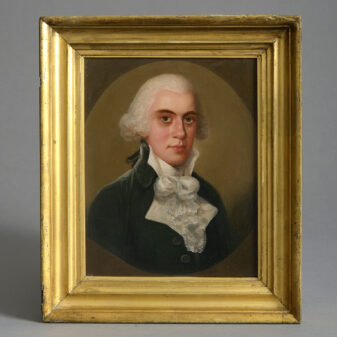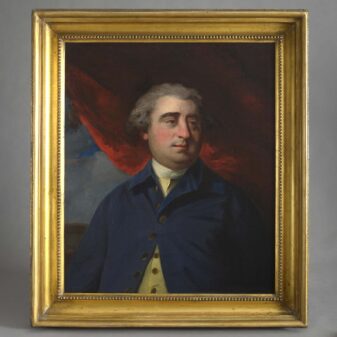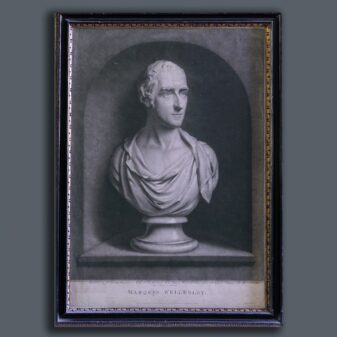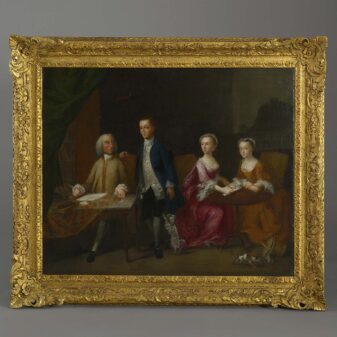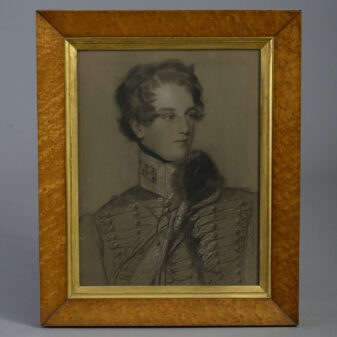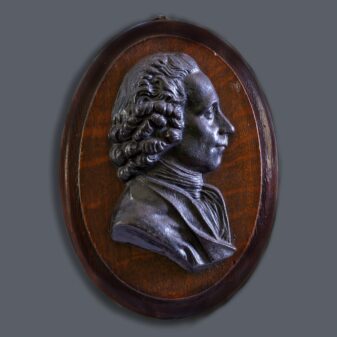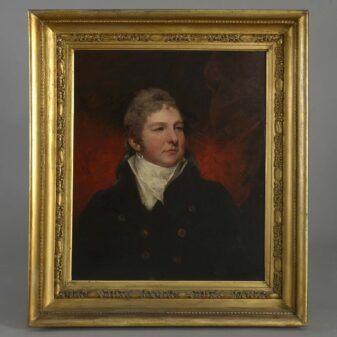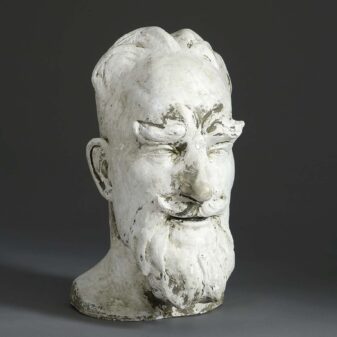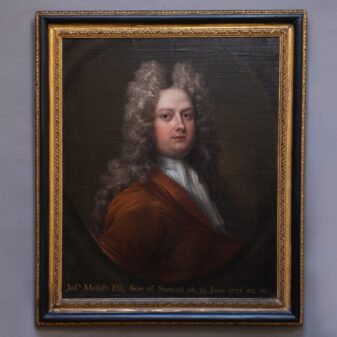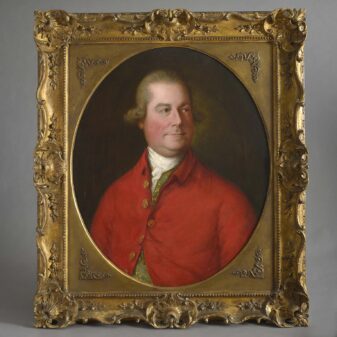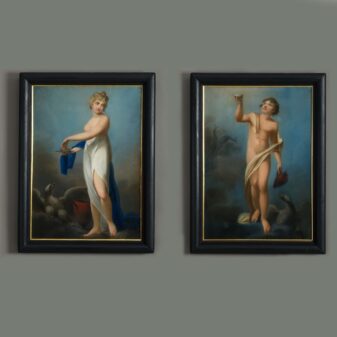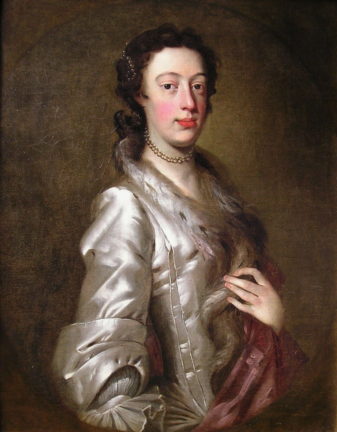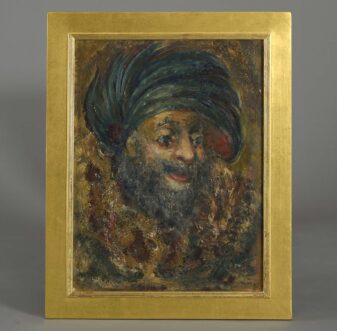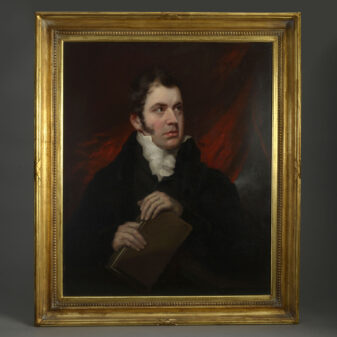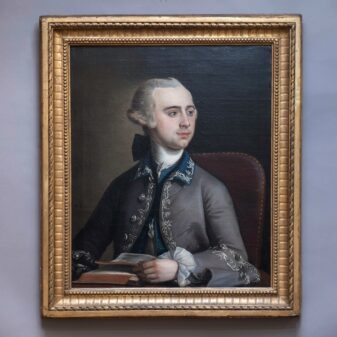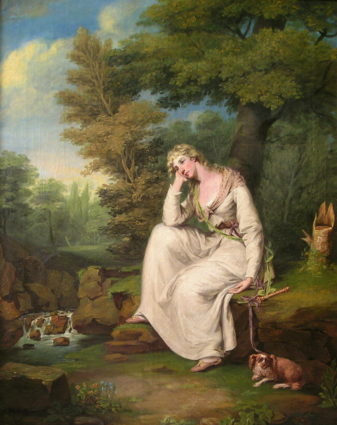Frans van der Mijn, Self Portrait
£2,500
SOLD
Black and white chalks on paper; 11 ¾ by 9 ½ in; 30 x 23.5 cm; held in a mid-eighteenth century ‘Hogarth’ style carved wood frame
Provenance: Agnews, 1980; Philip Mould – Historical Portraits, 2002
Exhibited: The British Face: 400 years of British, Irish and Colonial Portraiture
November-December 2002, Historical Portraits, London.
With thanks to the art historian Neil Jeffares for his views concerning this portrait
Frans van der Mijn came from a prolific artistic family. His aunt and siblings were all artists, whilst his father Herman was an established still life and portrait painter, who was to work for both the Elector Palatine and the English court, where his sitters included Frederick Prince of Wales and William, Prince of Orange.
Van der Mijn was taught by his father and probably worked as his assistant for a period. He established himself as a popular portrait painter, initially in Amsterdam and The Hague, where he worked between 1742 and 1749, and then in England where he moved to around 1750. He exhibited at the Free Society from 1763-1772 and there is evidence to suggest that he worked not only in London but Cambridge and Norwich also.
This engaging portrait study was previously thought to be by Herman van der Mijn but this is unlikely. No drawings by him are known to exist and more importantly a pair of portrait drawings by Frans van der Mijn at the British Museum displays the same style and technique as the one presented here. This together with other similarities concerning the paper and the size suggest that this is definitely a work by the son rather than the father.
Also there is much to suggest that this could be a self portrait of the artist. The direct glance, the style of clothes and the moustache of the sitter, a convention of the 1660s in Amsterdam, but not of an eighteenth century English court painter, all strongly allude to the earlier self portraits of such painters as Rembrandt and Rubens. Given that the artist only travelled to England in 1750 van der Mijn’s drawing is deliberately designed to remind us that he studied in Amsterdam where the memory of Rembrandt was still alive and in so doing amusingly associates himself with the great painter’s legacy. Other artists around this time also relished such association none more so than Reynolds in his self-portraits in the robes of a Doctor of Civil Law in 1780

